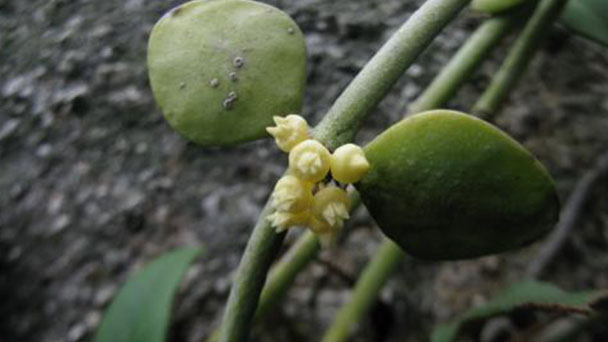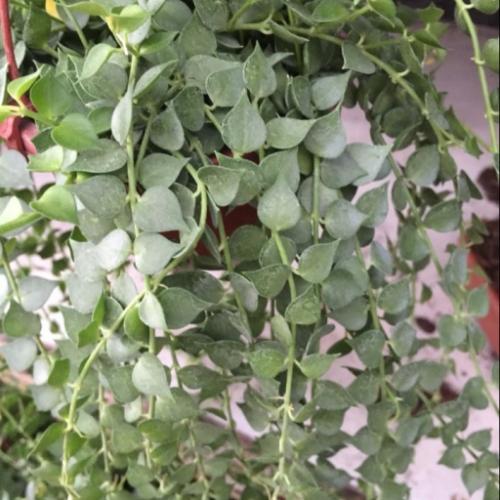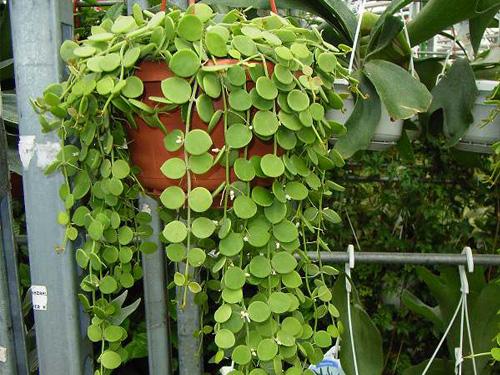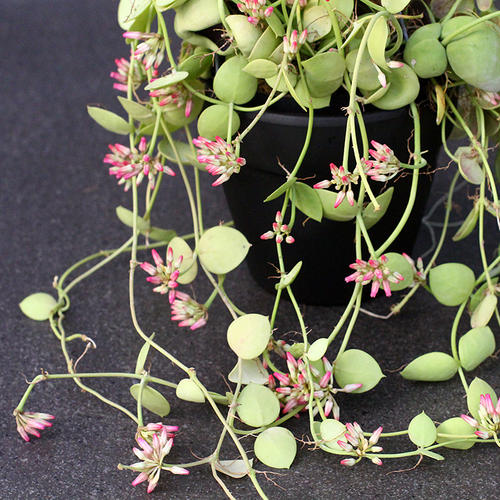Dischidia chinensis profile
Written by Maggie
Mar 16 2021

Dischidia chinensis is endemic to China. Dischidia chinensis, often attached to trees or rocks, fleshy leaves, ovoid elliptic, cymes axillary. Dischidia chinensis is distributed in Guangdong, Guangxi and Hong Kong in Mainland China, and grows at an elevation of 100 m to 600 m, mostly in valleys, trees, streams, moist miscellaneous woods or epiphytes in mountain areas.
Dischidia chinensis picture

Morphological characteristics of Dischidia chinensis
Dischidia chinensis is often clinging to trees or stones, the whole plant contains milk. The stem is fleshy, rooting at nodes, green, glabrous. Leaves are fleshy, ovate-elliptic, 1.55 -- 2.5 cm long, 1 cm wide, rounded at tip, without short cusp, base cuneate, petiole ca. 2 mm long.
Cymes are axillary, subsessile, tuberculate convex. Flowers are very small, calyx lobes ovoid, ca. 1 mm long and wide, ciliate. The corolla is yellow-white, ornate, corolla larynx compressed, thickened, sparsely villous, lobes triangular-ovate, obtuse, ca. 1 mm long and wide. Corolla lobes are anchelike, stipitate, apex 2-lobed, lobes linear, spreading and falling, with small rounded papillary projections between them. The pollen is mass oblong, erect, apex thickened. Follicles are cylindric, 5-8 cm long, 4mm in diam. Seeds are apex with white silky coat. Flowering period is April - May, fruiting period May - June.
Growth environment of Dischidia chinensis
Dischidia chinensis grows in moist woods, valleys and streams in mountainous areas, clinging to trees or epiphytes.

The distribution range of Dischidia chinensis
Dischidia chinensis is found in Guangdong and Guangxi.
Main value of Dischidia chinensis
The whole plant of Dischidia chinensis is used for medicinal purposes, and has the effect of clearing lung fever, reducing malaria, and cooling blood detoxification. It is folk for the treatment of dry cough blood, boils swelling and poison, infantile malnutrition, dysentery, beaten swollen pain, snake bite. It can also be used as an ornamental plant.

Latest Updated
- Benefits of Bugleweed - 7 Science-backed Health Benefits
- Bugleweed Dangers & Side Effects - Is It Poisonous?
- How to Plant Evergreen Trees - What You Should Know
- When to Plant Evergreens - Grow Guide for Evergreen Trees
- 12 Wonderful Evergreen Shrubs for Your Garden
- 12 Popular Evergreen Plants with Pictures for Beginners
- When And How To Prune A Lilac Bush Like a Pro
- How to Grow & Care for Lilac Vine (Hardenbergia Violacea)
- Japanese Lilac Tree (Syringa Reticulata) Care & Propagation Guide
- Shumard Oak Pros and Cons - What to Know
Popular Articles
- Winter maintenance of Antirrhinum Majus
- How to Grow Terminalia Mantaly Tree
- How to Grow and Care for Crossostephium Chinense
- How to grow Antirrhinum Majus in spring
- Peristeria Elata (Dove Orchid) Profile: Info & Care Guide
- Underwatered Snake Plant (Sansevieria Trifasciata) - Signs And How To Fix
- How to Care for Brazilian Jasmine Plant (Mandevilla Sanderi)
- How to Grow & Care for Graptopetalum Purple Delight in Summer
- Rosa Chinensis (China Rose): Plant Growing & Care Tips
- How to Care for Baby Sun Rose (Aptenia Cordifolia)